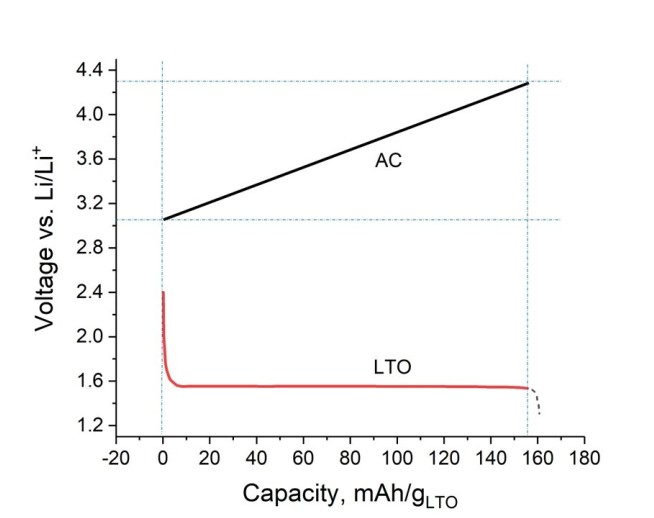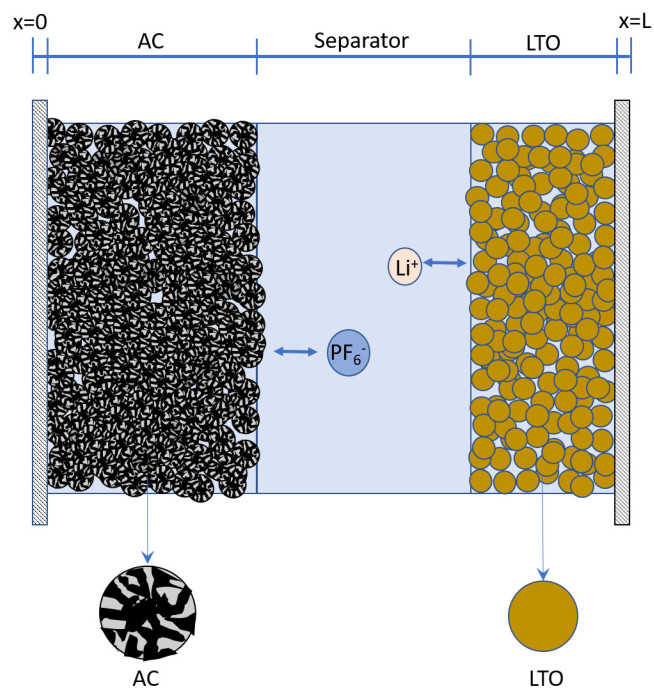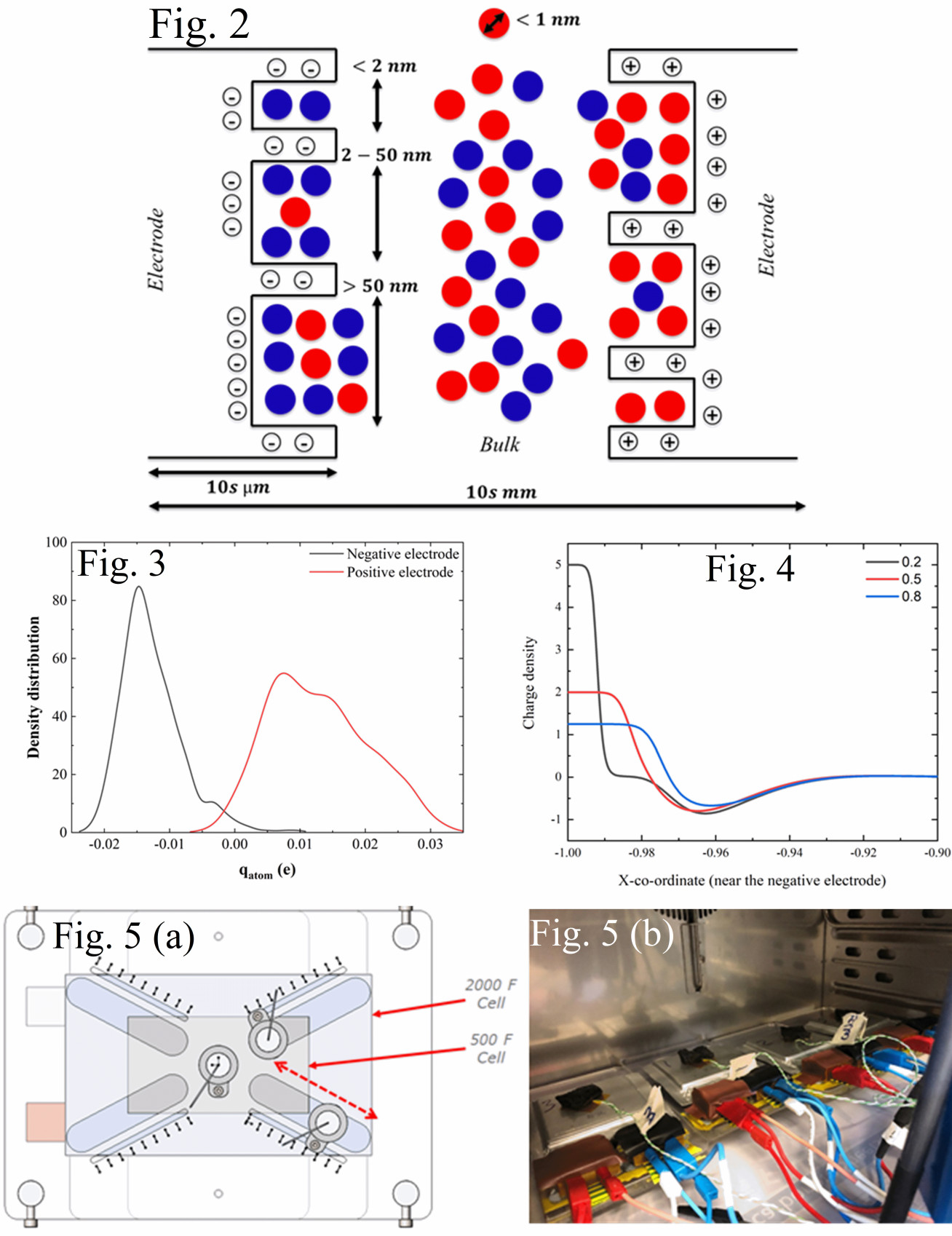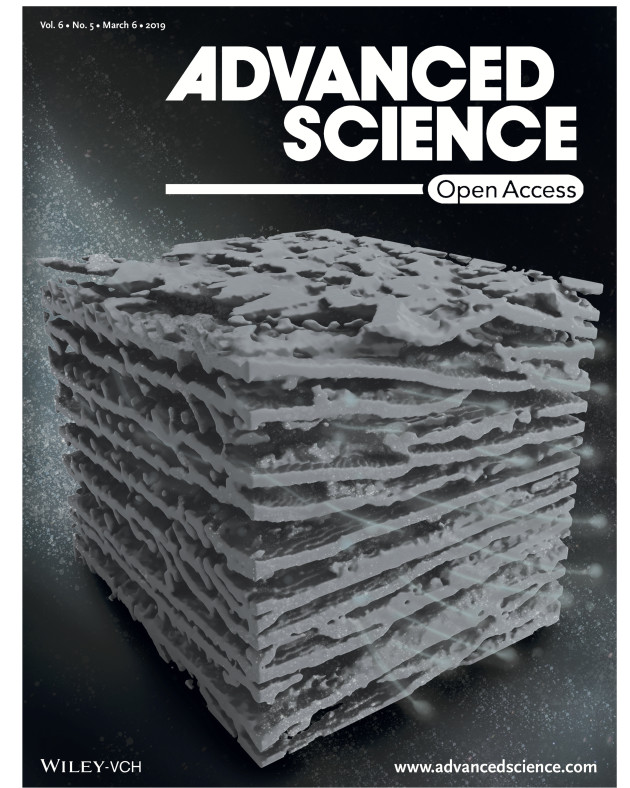Supercapacitors
Supercapacitors are electrochemical devices which have exceptional power densities and lifetimes, however their energy density is limited. Within the ESE group research has focused on development new carbon based materials for supercapacitors to improve their energy whilst maintaining the power density, application of pseudocapacitive materials, asymmetric electrode designs, understanding their internal thermal properties, modelling of their performance and their hybridisation with other devices.
Current projects
Modelling of lithium-ion capacitors
Lead researchers: Dr Ganesh Madabattula
PI’s: Dr Billy Wu, Dr Monica Marinescu and Dr Gregory Offer
Funding:
- Innovate UK, Advanced Lithium-Ion Capacitors and Electrodes (ALICE)-102655


The project aims to develop advanced lithium-ion capacitors based on lithium titanium oxide (LTO) and activated carbon as electrode materials to provide optimum energy density and power density with long cycle life for energy storage applications. Imperial provided physics-based modelling insights to the collaborators in the project to develop optimised cells. In this project, rate capability, the role of capacity ratio of electrodes, and pre-lithiation of LTO on cell performance and capacity fade were studied. The diagnostic techniques for capacity fade in the capacitors were developed. Newman’s porous electrode theory-based P2D models were simulated in COMSOL Multiphysics for the analysis.
Collaborators:
- Johnson Matthey
- Cummins Inc
- University of Oxford
- WMG-Warwick University
- Delta Motorsport Ltd
Publications:
- Madabattula G, Wu B, Marinescu M, Offer G, 2020, Degradation diagnostics for Li4Ti5O12-based lithium-ion capacitors: Insights from a physics-based model, Journal of the Electrochemical Society, Vol: 167(4), Page: 043503.
- Madabattula G, Wu B, Marinescu M, Offer G, 2019, How to design lithium-ion capacitors: modelling, mass ratio of electrodes and pre-lithiation, Journal of The Electrochemical Society, Vol: 167, Page: 013527.
- Madabattula G, Wu B, Marinescu M, Offer G, 2019, 1D Electrochemical Model for Lithium Ion Capacitors in Comsol.
Multiscale modelling of high energy density supercapacitors
Lead researchers: Dr Tribeni Roy and Dr Mohammad Amin Samieian
PI’s: Dr Huizhi Wang, Dr Yatish Patel, Dr Monica Marinescu and Dr Gregory Offer
Funding:
- InnovateUK WIZer Batteries, collaborative R&D with Williams Advanced Engineering, CodePlay Software Ltd., ZapGO Ltd. & Silver Power Systems Ltd.
.gif) Research into supercapacitors has recently gained prominence owing to the development of high potential window electrolytes (ionic liquids/non-aqueous electrolytes) and a range of electrode materials with controlled porosity. Supercapacitors are viewed as an add-on to lithium-ion batteries in electric vehicles to enhance the overall power density, enable fast charging and longer cycle life.
Research into supercapacitors has recently gained prominence owing to the development of high potential window electrolytes (ionic liquids/non-aqueous electrolytes) and a range of electrode materials with controlled porosity. Supercapacitors are viewed as an add-on to lithium-ion batteries in electric vehicles to enhance the overall power density, enable fast charging and longer cycle life.

However, the behaviour of the recently developed electrolytes for enhancing energy density via formation of (crowded) double layer is not fully understood. Also, the random pore size distribution on the electrode is a limiting factor owing to reduced capacitance despite using high potential electrolytes.
We are developing multiscale models (coupled DFT-MD-FEA) to understand the behaviour of these electrolytes in terms of double-layer formation, diffusion in the electrode pores and thereby predict the optimal pore size distribution on the electrode to enhance the energy density while maintaining reasonably high-power density.
Experimental facilities include Electrochemical Impedance Spectroscopy (EIS), Cyclic Voltammetry (CV), Power cycling, Degradation tests, and Cell expansion measurement tests.
Collaborators:
- ESE group - Department of Mechanical Engineering: Dr Ruben James Tomlin, Dr Abir Ghosh and Dr Ganesh Madabattula
Publications:
- Jamieson L, Roy T, Wang H, 2020, Postulation of optimal charging protocols for minimal charge redistribution in supercapacitors based on the modelling of solid phase charge density, Journal of Energy Storage.
Presentations:
- Invited talk of Dr Tribeni Roy on the topic Multi-scale Modelling of High Energy Density Supercapacitors in Institute for Molecular Science and Engineering (IMSE) Webinar series on Molecular Engineering for Next Generation Batteries, November 2020.
Awards:
- Mechanical Engineering Departmental Prize - Unwin Postgraduate Prize 2020 to MSc student Luke Jamieson, supervised by Dr Tribeni Roy and Dr Huizhi Wang, November 2020.
Recent publications 2020 - to date
Hérou S, Bailey JJ, Kok M , Schlee P, Jervis R, Brett D.J.L, Shearing P.R, Ribadeneyra M C, Titirici M, 2021, High-Density Lignin-Derived Carbon Nanofiber Supercapacitors with Enhanced Volumetric Energy Density, Advanced Science
Luo X, Varela Barreras J, Chambon C, Wu B, Batzelis E, 2021, Hybridizing Lead–Acid Batteries with Supercapacitors: A Methodology, Energies
Schlee P, Hosseinaei O, O’Keefe CA, Mostazo-López MJ, Cazorla-Amorós D, Herou S, Tomani P, Grey CP, Titirici MM, 2020, Hardwood: versus softwood Kraft lignin-precursor-product relationships in the manufacture of porous carbon nanofibers for supercapacitors. Journal of Materials Chemistry A, Vol: 8(44), Pages: 23543–23554.
Jamieson L, Roy T, Wang H, 2020, Postulation of optimal charging protocols for minimal charge redistribution in supercapacitors based on the modelling of solid phase charge density, Journal of Energy Storage.
Our paper featured as a cover page in Advanced Science
Our paper on a freeze aligned ionogel supercapacitor electrolytes was featured as a cover page in Advanced Science
Liu X, Taiwo OO, Yin C, Ouyang M, Chowdhury R, Wang B, 2019, Supercapacitors: Aligned Ionogel Electrolytes for High-Temperature Supercapacitors, Advanced Science, Vol: 6, Pages: 1801337
This work reports a self‐initiated cryopolymerization method to prepare nanocomposite ionogels with hierarchical aligned pores for use in high temperature supercapacitors. Diffusion simulations based on X‐ray tomographic 3D reconstructed images are used to explain the origins of the observed electrochemical enhancements in the aligned ionogels, which highlight the potential for structured materials in energy storage devices.





